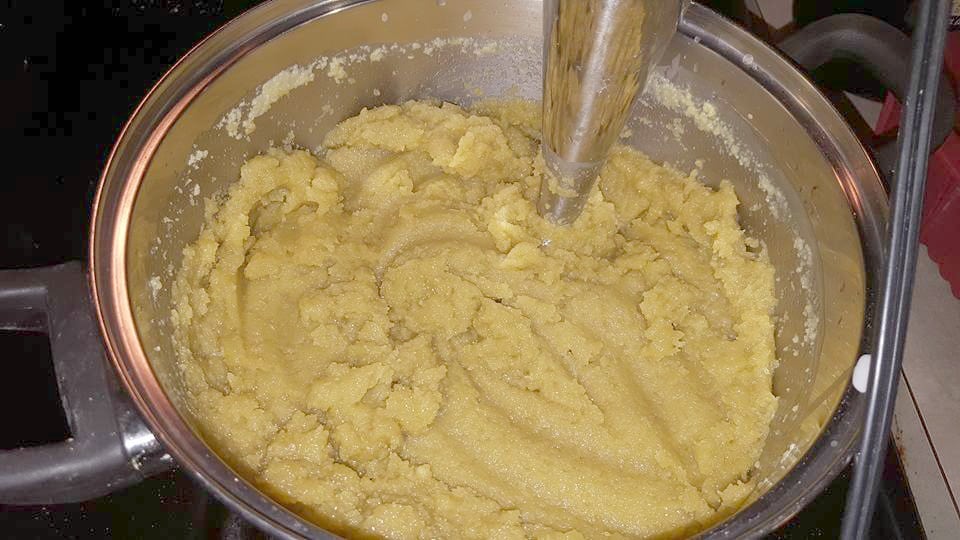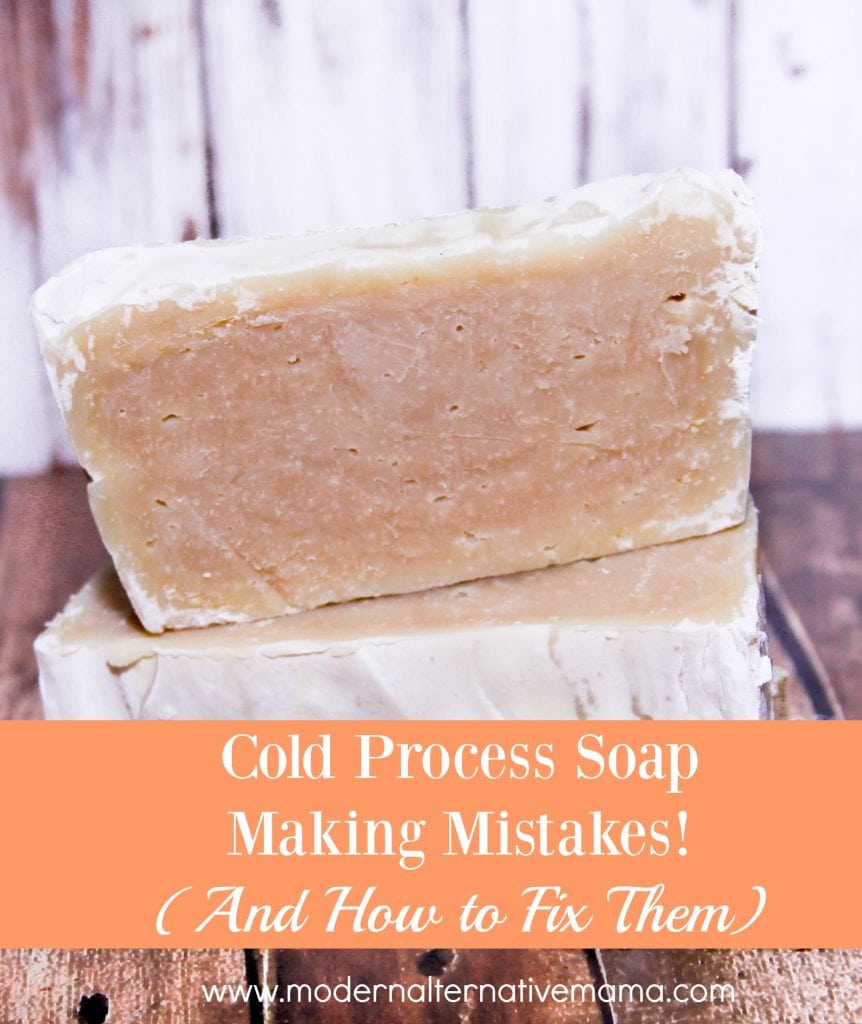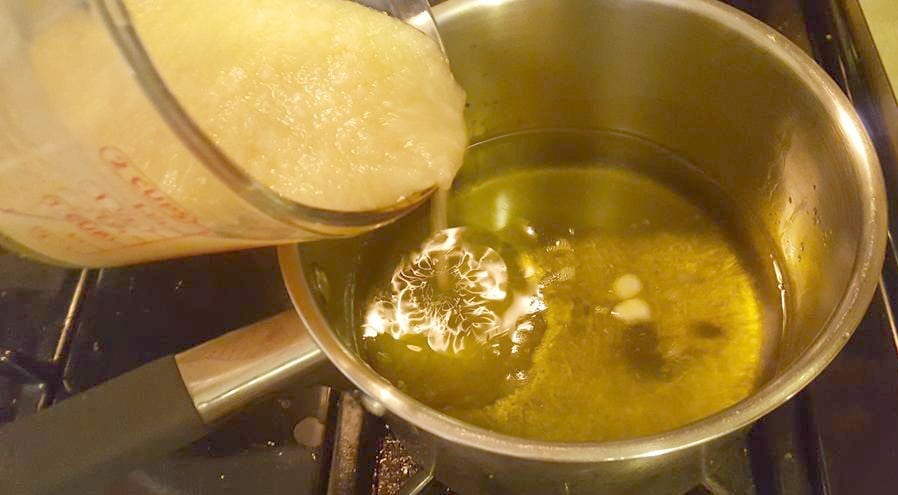Over the last week or so, I’ve been walking you through the basics of cold process soap making. I shared with you lye safety and equipment, oils and extras, and the actual cold process soap tutorial. But now we have to talk troubleshooting. If you’re anything like me, you think you totally get it and can do it…but don’t always follow directions that closely, and end up with soap making mistakes!
Don’t be like me.
Anyway, I learned from my mistakes (I always do), and now I’m going to tell you all about it so that hopefully, you won’t make the same mistakes I did.
Too intimidated already? You can purchase pure, natural cold process soap from me at Earthley.
Cold Process Soap Making Mistakes! (And How to Fix Them)
I read and read and read for about two years before I dove into soap making. I found it so intimidating at first, but I ended up finding it pretty easy! But. Things didn’t go so smoothly until my fourth batch, and even then I had a small ‘whoopsie’ (soap making mistake!) early in the process that I managed to fix.
I can’t claim to be an expert and I haven’t made every mistake out there (I hope several, I never make!), so this isn’t a comprehensive troubleshooting post. But, I will tell you what I did wrong in each batch, what the problem was, and how I solved it — plus, how you can avoid it.
Batch #1: Pumpkin Spice Soap
In this soap, everything was looking perfect. The soap came together well, poured into the mold pretty well, and got set aside to cool. Then, a short time later, I noticed that the surface looked kind of whitish, and the center had cracked!
A Cracked Center
This occurs when the soap cools too quickly or gets too dry. I think that by stirring in too much of my dry spices, I caused the soap to be dry, causing the crack. I also had not had my lye at the right temperature, so the heat could have been an issue as well.
Too much lye can also cause a crack, but I had measured very carefully and had superfatted at 5%, so this was highly unlikely.
The Lesson: Check the temperature of your lye carefully before adding, measure your ingredients carefully, and mix your spices or dry additions with a small amount of soap or liquid (from the total amount of liquid in the recipe) before adding.
Some essential oils can also cause this — the soap pictured above is coconut milk soap, and both soaps came from the same batch. The one on the right was unscented, and the one on the left was citrus scented, which seemed to make it get hotter. (It looks really cool now, all orange swirled.)
Batch #2: Green Clay Coconut Milk Facial Soap
I got extra fancy with this one. I had a blend of 5 different oils, plus coconut milk, plus French green clay. Everything started out great. The soap blended nicely and reached a light trace, which is when I added the coconut milk. This caused it to come to a full trace very rapidly (I wasn’t expecting that), and I quickly added the clay (which I had mixed with some coconut milk first).
Problem! The soap suddenly separated into an applesauce-like texture, with chunks of soap-like bits floating in oil. Major soap making mistake.
I kind of panicked and started looking it up, but never did find anything helpful. I still can’t prove I know what happened, but, I think it was a combination of two things.
Separation Into Soap Chunks and Oil
This can occur with the addition of certain fragrance oils, which wasn’t a factor for me. It can also occur normally in the production of liquid soaps during one stage of the cooking process. It isn’t normal with bar soaps, though.
I believe this occurred because my lye had been too hot when I added it, causing the soap to be too hot. Adding the room-temperature coconut milk was a sharp temperature difference, causing it to thicken quickly. Then, I added too much clay, which dried the soap out.
Reducing the amount of clay and keeping the ingredients at the right temperature should fix this. I made a similar recipe for batch #4, without the clay, and had no similar issues.
Ultimately, after I let the soap sit for 10 minutes, it came back together, but was very stiff and impossible to get into the mold (this is ‘seizing’). I had to scoop it in chunks and press it down. The bottom came out a bit oily, too. But, although it’s lumpy, it seems to be okay.
This recipe, ultimately, wasn’t a great one. Once the soap had cured, the bar was quite slimy, so I don’t use it. The hazards of formulating your own recipes.
Batch #3: Coconut Oil Soap
I did this one immediately after batch #2, because I was so stressed out and I “needed a win,” and the recipe was so easy I could not possibly screw it up. Right?
Wrong.
I was a little impatient because it was late, the aforementioned stress, and it was so easy that I didn’t take time or care. Everything was going great with the recipe…until just after I reached trace.
Then I realized I’d left the stove on! Low, but…still. The soap started bubbling up like a volcano. I knew it was too hot. I tried to stir it down. Then I filled a sink with cold water and tried to stir it there. It separated. It wouldn’t go back together.
I let it sit overnight, with soap-like chunks and bubbly water oozing all over the place. It hardened in the pot, still separated. I eventually re-melted it all, and the liquid absorbed, and I was able to scoop it into the mold (very thick again), and it had orange-ish burn-like spots on it. Boo.
I forgot to take a picture of this soap making mistake because I was so frustrated by it.
Volcano-ing and Separation
Heat was definitely the problem with this batch. I should have let the lye sit longer before adding it, and have made sure the stove was completely off once the oil was melted. The soap just got way, way too hot, which caused all of the other problems.
I learned to keep the stove off and to use a thermometer to measure the temperature of the lye water after this experience.
However, I have made this again and even when I carefully cooled my lye and soaped with the stove off, the soap still started to split and volcano in the molds. It didn’t separate and it turned out fine. Coconut oil soap just gets hot. It would be best to stick the soap in the fridge immediately after putting it in the mold to cool more rapidly and avoid the volcano. This can be done for any soap that gets too hot, if you see it happening.
Batch #4: Basic Coconut Milk Soap
I had learned my lesson. I was not going to get the soap too hot again.
So I mixed up my lye solution and let it sit for quite awhile. I mixed only a small amount of water with the lye, because I was using coconut milk for the rest of it. This would have been fine, but the temperature of the solution determines how much lye can dissolve in it.
At 130 degrees, it was perfect. Not too hot for soaping, but not too cool, either. Unfortunately, I let it cool to somewhere around 100 – 110 degrees.
Uh-oh!
At that ‘low’ temperature, there was too little water for the amount of lye, and the lye was re-crystallizing! I could not put lye crystals into the oils, and risk them in my finished soap.
You can see sort of a chunky texture above. It’s actually been stirred back in with extra liquid, the lye is dissolved, but it looked similar to this (without the coconut milk) before. Little long shards of lye crystals.
Re-Crystallizing Lye
This occurs because of the combination of the low temperature and the low amount of water to lye. If I had had the full amount of water, it would not have done this. Certain types of ‘fancy’ soap actually require cold lye water, like refrigerated! But because I had the low amount of water, it was not going to work.
I stuck the measuring cup into a pot with water in it and turned it on low heat. I stirred it to gently re-warm it and re-dissolve the lye. Then I decided to add the coconut milk to the lye mixture because the potential of burning the coconut milk was not as much of a risk as adding lye crystals to the oil.
The coconut milk turned yellowish, indicating it burned slightly, but it didn’t matter too much.
The moral of the story: don’t let your lye water cool below 130 if you are using a lower amount of water. If you do, you can gently re-warm, add additional liquid (as much as the recipe calls for), or throw it out and start over.
How to Avoid Soap Making Mistakes
Above, I detailed how to avoid each mistake, but the basic thing is — follow directions carefully! Start with a tried-and-true recipe (which I didn’t, because I’m like that).
Get a thermometer and measure the temperature of your ingredients. Get a scale and weigh them carefully. Read the recipe and the tutorial closely so that you know what you’re doing before you get started. Read and re-read ahead of time.
Soaping is truly not that hard, but if you aren’t detail-oriented, a lot of things can go wrong. Most soaps can be saved — I did save all of mine — but it’s annoying and frustrating to need to ‘save’ them instead of just doing them right the first time! Learn from me and avoid these soap making mistakes!
I promise it’s not as hard as it sounds, but if I’ve scared you off…you can purchase pure, natural cold process soap from me at Earthley.







I made soap today and made a mistake with the lye I used 2 TBS instead of 12 for the batch.. The mixture did not trace and is in a mushy on top and the oils are underneath..What can I do to fix this?
Try re-batching with the additional lye…although if it doesn’t work, this one may be a failure, unfortunately. Every soap maker has a few.
can you round off measurement of grams, being my scale does give me the exact measurements. for example 181.77 grams. can i use 182 grams?
Yes, those measurements are so close that rounding slightly is fine.
Hi, (writing for my mother) 🙂
just wanted your opinion…my soap feels quite greasy even after 2 months…its not soft or anything. My new soaps don’t feel oily once taken out of the mold but after a while 1-2 months they feel oily / greasy…on the outer layers. I have read that maybe its the mixing process or removing it from the mold quickly. Any help would be appreciated.
I’ve made many batches of soap. I make 10 lb. Batches. Twice now the outside hardened and the middle was thick liquid thay oozed out when sliced. Any ideas what went wrong?
Hi just made a test run batch with exact ingredients and decided to go smaller so:
2.20oz. Of lye
5.70oz of distilled water
15oz.of coconut oil melted.
The original recipe was double this but i didn’t want to make so much for a test run.
Well the batch seemed good, added oils but ended up adding oatmeal into the full batch than in a small bowl to put into the full batch. Added scented oils but the batch smells nothing like scented. Green tea, French vanilla coffee, with coffee grains.
Very good but it began to harden. Put in freezer to start for 20 min. Then put into fridge. Used the 6 tray rectangle mold. 4oz bars but filled 5.2.. the smaller was a tester. Well of course it wasn’t hard yet but excised i wanted ti check. Why did i test a tint piece in my hand irritated…yes.
Any way i can fix this, possible melt again.
Hi my soap is dry and cracks on the bottom only very small part I can cut it off with a vegetable peeler but what causes this? the rest of the soap is nice a very hard bar . i sued 30% coconut oil with 20%ricebran, 20%sunflower and 30%olive.
Today i made a batch of coconut soap I followed the instructions but when i added the coconut milk it siezed although i could still put it into a container and it still cut into beautiful bars im worried that i wont be able to use it because of the lye mabye not reacting properly
Today I made soap four times and all separated. As I would pour in the lyre without any other thing, the soap separates. The question is it because I was pouring the lyre all at once or what. Any suggestions?
Hai I’m very stressed.because of my today experience.I done my first batch was well.but today I try with my fav oils like,castor oil,coconut oil and sesame oil soap.I prepared my lye yesterday.today I take to use.I put my oil into the lye suddenly it freezed.I don’t know how to fix it.
Hello, I’ve just made 2 batches of soap and I’m thinking that I poured too soon. Due to hand stirring, I believe I reached false trace thinking it was just past emulsion. I soaped at low temperatures (72 for the first and 83 for the second), both have a white chalky texture but the second also had cracks on the top (I forgot to mix my colorants with oil and just mixed into the soap, so I’m guessing it got too dry?). The first batch left my hands fairly dry and it can sting a teensy bit I’d not rinsed off. I’ve chopped it up and put it in my crockpot attempting to salvage it, can it be? I haven’t tested the second loaf yet, but touching it doesn’t sting. I cannot find definitive answers for my troubles and whether or not all hope is lost. I suppose I could turn it into laundry soap and invest in a stick blender in the meantime (which is totally my plan), but I’d love to use this if at all possible. Thoughts?
I made a loaf of CP 2 days ago & I do not like the top. Is it too late to add a piped frosting?